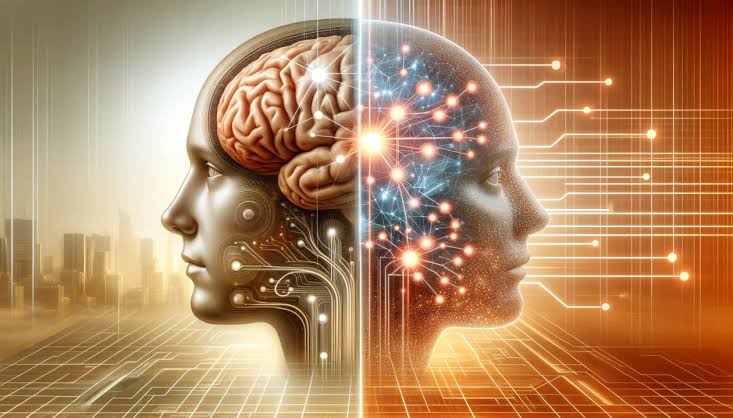Unveil human brain with Deep Learning
Deep learning subset of artificial intelligence (AI) and machine learning (ML), has garnered significant attention in recent years. Its ability to analyze large amounts of data and solve complex problems is remarkable. Inspired by structure and function of human brain deep learning algorithms are designed to mimic neural networks. These networks underlie human cognition. By understanding how these algorithms work we can gain insight. This includes both the capabilities of AI and mysteries of human brain itself.
The Foundation of Deep Learning
At its core deep learning is based on artificial neural networks (ANNs) which consist of layers of interconnected nodes or neurons. Each neuron processes input data and passes results to next layer. The network learns from data it receives. This layered approach enables deep learning models. They handle complex patterns. Relationships within data make them well-suited for tasks such as image recognition. They excel in natural language processing. They are strong in predictive analytics.
Feature Extraction
One key feature of deep learning is its ability to perform feature extraction. This is a process by which model identifies the most relevant aspects of input data. In traditional machine learning feature extraction often requires significant human intervention. Experts must manually identify and engineer features. These are what model will use. Deep learning, however automates this process. It allows model to learn and extract features directly from data. This reduces the need for human expertise. It also enables model to uncover subtle and complex patterns. These might be missed by traditional methods.
Types of Neural Networks
The architecture of deep learning models can vary widely, with different types of neural networks being suited to different tasks. Convolutional neural networks (CNNs), for example, are particularly effective for image recognition tasks due to their ability to process spatial hierarchies and local patterns. Recurrent neural networks (RNNs), on the other hand, are designed to handle sequential data, making them ideal for tasks such as language modeling and time series analysis. More advanced architectures, such as generative adversarial networks (GANs) and transformers, have further expanded the capabilities of deep learning, enabling the generation of realistic images and text, among other applications.
The Training Process
The training process for deep learning models involves feeding large amounts of labeled data into the network and adjusting the weights of the connections between neurons based on the errors in the model's predictions. This process, known as backpropagation, allows the network to gradually improve its performance by minimizing the difference between its predictions and the actual outcomes. The success of this approach is largely dependent on the availability of large datasets and powerful computational resources, as deep learning models typically require substantial amounts of data and processing power to achieve optimal performance.
Insights into the Human Brain
One of the most compelling aspects of deep learning is its potential to shed light on the workings of the human brain. By studying how artificial neural networks process and learn from data, researchers can gain insights into the principles that govern human cognition. For example, the hierarchical structure of deep learning models mirrors the organization of the human visual system, with lower layers detecting simple features such as edges and textures, and higher layers processing more complex patterns and objects. This resemblance has led to the development of biologically inspired models that seek to replicate the functions of specific brain regions, such as the visual cortex or the hippocampus.
Advancing Cognitive Science
Moreover, deep learning has been instrumental in advancing our understanding of various cognitive processes. For instance, researchers have used deep learning models to investigate the neural basis of memory, attention, and decision-making. By comparing the behavior of artificial neural networks to that of biological neural networks, scientists can test hypotheses about the mechanisms underlying these processes and develop more accurate models of brain function. This interdisciplinary approach has the potential to revolutionize both neuroscience and artificial intelligence, leading to the development of more sophisticated AI systems and a deeper understanding of the human mind.
Challenges and Limitations
Despite its many successes, deep learning is not without its challenges and limitations. One of the primary concerns is the "black box" nature of these models, as their complex architectures often make it difficult to interpret how they arrive at their predictions. This lack of transparency can be problematic in applications where explainability is crucial, such as healthcare or finance. Efforts to develop more interpretable models and techniques for explaining the decisions of deep learning algorithms are ongoing, but this remains an active area of research.
Data Requirements and Vulnerabilities
Another challenge is the need for large amounts of labeled data, which can be difficult and expensive to obtain. While techniques such as transfer learning and unsupervised learning have been developed to mitigate this issue, the reliance on extensive datasets remains a significant barrier to the widespread adoption of deep learning. Additionally, deep learning models can be vulnerable to adversarial attacks, in which small perturbations to the input data can lead to incorrect predictions. Developing robust models that can withstand such attacks is an important area of research, particularly as AI systems become more integrated into critical applications.
Ethical Considerations
Ethical considerations also play a crucial role in the development and deployment of deep learning technologies. As these models are increasingly used in decision-making processes that impact individuals and society, it is essential to address issues such as bias, fairness, and accountability. Ensuring that deep learning systems are developed and used in a manner that respects ethical principles and promotes positive societal outcomes is a shared responsibility of researchers, developers, policymakers, and stakeholders.
